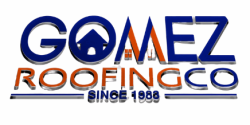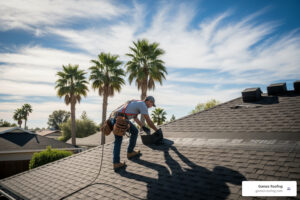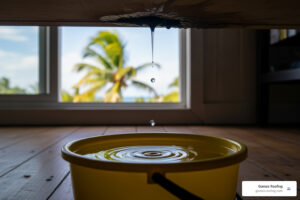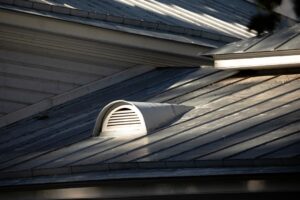Local Decking Contractors: Pricing & Services Guide
Selecting the right commercial decking partner hinges on transparent cost comparisons and service quality, as hidden fees and inconsistent workmanship can erode both budget and property value. In this guide, we reveal how pricing and services of different commercial decking contractors compare in your area, outline the core benefits of durable deck installations, unpack material and labor costs, explore regulatory and maintenance considerations, and offer a step-by-step vetting framework. You’ll learn which service offerings to expect, how to assess materials like composite or aluminum decking, navigate permits and safety codes, and extend deck longevity through proactive upkeep. Finally, discover why partnering with Commercial Decking Services from Gomez Roofing delivers dependable, code-compliant solutions that enhance commercial property value.
What Is Commercial Decking and Why Is It Important for Your Property?
Commercial decking is a robust platform system designed for public and business environments, providing safe, functional outdoor space that can withstand high foot traffic and weather exposure. By integrating structural framing, durable surfacing, and safety features like railings and non-slip coatings, a commercial deck enhances usability and aesthetic appeal for restaurants, offices, hotels, and multi-family properties. For instance, a well-built deck increases usable square footage instantly and invites higher customer engagement, laying a foundation for improved ROI.
What Defines Commercial Decking and Its Common Uses?
Commercial decking comprises heavy-duty substructure components—steel, aluminum, or pressure-treated timber—topped by surfacing materials rated for UV exposure, moisture resistance, and load capacity. Typical applications include:
- Restaurant patios that host outdoor dining crowds.
- Office building terraces used for events or employee lounges.
- Hotel pool decks requiring slip-resistant surfaces.
- Multi-family common areas designed for community gatherings.
These use cases demand a combination of durability and design flexibility that residential decks generally do not require, bridging to how decking choices amplify property value.
How Does Commercial Decking Enhance Property Value and Usability?
Commercial decks deliver tangible returns by:
- Expanding Functional Space – Adding square footage without costly structural additions.
- Boosting Curb Appeal – Custom finishes and integrated lighting elevate brand image.
- Generating Revenue – Outdoor seating or event areas can increase foot traffic and rental rates.
- Supporting ADA Compliance – Ramps and accessible pathways open properties to a broader audience.
A business that invests in a compliant, stylish deck often sees lease premiums rise and occupant satisfaction improve, which in turn justifies the upfront investment.
Commercial Decking and Property Value
Commercial decks can increase property value by expanding functional space, boosting curb appeal, generating revenue through outdoor seating, and supporting ADA compliance, which can lead to higher lease premiums and improved occupant satisfaction.
Which Commercial Decking Materials Are Most Popular?
Before examining prices, here’s a quick comparison of common materials:
| Material | Durability | Maintenance Level | Typical Use Cases | Environmental Impact |
|---|---|---|---|---|
| Composite Decking | High (25+ years) | Low | Restaurants, public decks | Recycled content |
| Pressure-Treated Wood | Moderate (15–20 years) | Medium | Budget-sensitive projects | Harvested timber |
| Aluminum Decking | Very High (30+ years) | Very Low | Rooftop terraces, coastal environments | Fully recyclable |
| PVC/Vinyl Decking | High (20+ years) | Low | Healthcare, retail properties | Plastic based |
Commercial Decking Materials
Composite and aluminum decking are popular choices due to their low maintenance and extended lifespans. Composite decking blends wood fibers with recycled polymers, while aluminum is impervious to moisture, insects, and fire.
Composite and aluminum dominate due to minimal upkeep and extended lifespans, a factor that ties into cost comparisons for local installers.
How Do Commercial Decking Prices Compare Among Local Contractors?
Commercial decking costs vary regionally based on material sourcing, labor rates, regulatory requirements, and contractor overhead. Understanding each component helps property managers forecast budgets accurately and select the right local partner.
What Are the Typical Material Costs for Commercial Decking?
Below is an overview of average per-square-foot material prices offered by local contractors:
| Decking Type | Price Range (per sq ft) | Key Attribute |
|---|---|---|
| Composite Decking | $15 – $30 | Low maintenance |
| Pressure-Treated Wood | $8 – $15 | Cost-effective |
| Aluminum Decking | $25 – $45 | High durability |
| PVC/Vinyl Decking | $20 – $35 | Slip-resistant finish |
Commercial Decking Costs
Commercial decking costs vary based on material sourcing, labor rates, regulatory requirements, and contractor overhead. Material costs per square foot range from $15-$30 for composite decking, $8-$15 for pressure-treated wood, $25-$45 for aluminum decking, and $20-$35 for PVC/vinyl decking.
Each material range reflects sourcing costs and quality tiers; composite options made from premium polymers can skew toward the higher end, while basic wood decking remains budget-friendly yet demands more upkeep.
How Do Labor and Installation Fees Affect Total Decking Costs?
Labor comprises roughly 30–50% of total decking expenses and depends on:
- Complexity of Design – Multi-level or curved layouts require advanced framing techniques.
- Site Preparation – Sloping terrain or structural reinforcements add hours.
- Crew Experience – Certified installers cost more but reduce rework risk.
Large commercial crews can install 200–300 square feet per day, with rates from $50 to $100 per hour per worker. Faster timelines reduce overhead but may involve premium labor costs.
Labor and Installation Fees
Labor typically accounts for 30–50% of total decking expenses, influenced by design complexity, site preparation, and crew experience. Large commercial crews can install 200–300 square feet per day, with rates from $50 to $100 per hour per worker.
What Permit and Regulatory Fees Should You Expect?
Permitting and code compliance typically add 2–5% to project budgets:
- Building Permits – Costs vary by jurisdiction; plan for $200–$1,000.
- Plan Review Fees – Architectural and engineering approvals may apply.
- Inspection Charges – Safety and structural inspections often incur additional fees.
Failing to account for these can stall construction and trigger fines, making regulatory planning essential for project timelines and cost control.
Permitting and Regulatory Fees
Permitting and code compliance typically add 2–5% to project budgets, with building permits costing $200–$1,000. Failing to account for these can stall construction and trigger fines.
How Does Long-Term Maintenance Impact Overall Decking Expenses?
Maintenance factors into total cost of ownership through periodic tasks such as:
- Surface cleaning and sealing (annually for wood, bi-annual power washing for composite).
- Component repairs (replacing worn boards, tightening fasteners).
- Protective coating applications (every 3–5 years for certain finishes).
Low-maintenance materials like aluminum forego coatings but require inspection of fasteners and railings, ensuring safety standards remain met. Factoring in these tasks can add $1–$2 per square foot annually.
Commercial Deck Maintenance
Regular maintenance, including cleaning and sealing, is crucial for extending the life of a commercial deck. Maintenance can add $1–$2 per square foot annually.
What Is the Return on Investment (ROI) for Commercial Decking Projects?
Well-executed decks offer strong financial returns:
- Property Value Increase – Up to 10% asset appreciation when decks enhance curb appeal and functional space.
- Revenue Generation – Outdoor seating can boost sales by 15–25% in hospitality settings.
- Occupancy Rates – Multi-family units with communal decks often command higher rents and faster lease uptake.
An ROI calculation should weigh upfront costs against these incremental gains over a 10- to 15-year period, illustrating long-term value.
Return on Investment (ROI) for Commercial Decking
Well-executed decks offer strong financial returns, including property value increases (up to 10%), revenue generation through outdoor seating (15–25% increase in hospitality settings), and higher occupancy rates.
What Services Do Local Commercial Decking Contractors Offer?
Top-tier decking firms provide an end-to-end service continuum covering design, installation, maintenance, and compliance assurance. Understanding each service tier clarifies what to expect when comparing bids.
How Do Contractors Handle Design and Planning for Commercial Decks?
Professionals begin with site assessments, engineering analysis, and material consultations to develop bespoke layouts that integrate with existing architecture. This includes:
- CAD renderings for stakeholder approvals.
- Structural load calculations aligned with local codes.
- Material mock-ups to finalize aesthetics and performance.
A precise plan reduces change orders and ensures projects adhere to budget and timeline constraints.
What Should You Expect from the Installation Process?
Quality installation rests on certified crews following manufacturer guidelines and best-practice techniques. Key steps include:
- Substructure Framing – Level supports and joists.
- Deck Board Installation – Precision alignment and secure fastening.
- Accessory Integration – Railings, lighting, drainage solutions.
- Final Inspection – Internal quality checks before code-mandated approvals.
Timelines vary, but a typical 1,000-square-foot commercial deck may take two to three weeks to complete, minimizing business disruption.
Which Repair and Maintenance Services Are Typically Provided?
Ongoing upkeep offerings often include:
- Annual cleaning and sealing plans.
- Board replacements and fastener tightening.
- Surface refinishing and hardware upgrades.
- Customized service contracts with performance guarantees.
These programs protect your investment and simplify budgeting for long-term deck preservation.
How Do Contractors Ensure Safety Inspections and Code Compliance?
Reputable contractors implement third-party inspections aligned with:
- IBC Requirements – Confirming load capacities and structural soundness.
- ADA Standards – Verifying accessible routes, ramp slopes, and railing heights.
- Local Safety Codes – Checking slip resistance, baluster spacing, and fire-resistant finishes.
By coordinating inspections at critical milestones, they mitigate rework risks and secure occupancy permits efficiently.
How Can You Choose the Best Commercial Decking Contractor Locally?
Selecting the ideal decking partner goes beyond price; it demands scrutiny of experience, credentials, communication practices, and reputation.
What Experience and Portfolio Should You Look For?
Evaluate contractors based on:
- Number of commercial projects completed.
- Portfolio diversity: restaurants, offices, multifamily properties.
- Case studies detailing challenges, solutions, and client outcomes.
This evidence demonstrates adaptability to varying site conditions and business needs, guiding you toward proven expertise.
Why Are Licensing, Insurance, and Certifications Critical?
Contractors must carry:
- General Liability Insurance – Protects property and personnel.
- Workers’ Compensation – Covers on-site injuries.
- Professional Licenses – Validates compliance with state regulations.
- Material Certifications – Endorsement from composite or aluminum manufacturers.
These safeguards reduce liability exposure and confirm industry-approved practices.
How Important Is Transparent Communication and Contract Clarity?
Clear proposals enumerate scope, materials, schedule milestones, payment terms, and warranty conditions. Prioritize contractors who:
- Provide itemized bids without vague line items.
- Offer responsive project updates.
- Document change-order procedures.
Transparent dialogue prevents misunderstandings and aligns expectations from project initiation through closeout.
How Do Customer Reviews and References Influence Your Decision?
Social proof from past clients reflects real-world performance. Seek:
- Verified testimonials on independent platforms.
- Direct references for in-person site visits.
- Online ratings highlighting responsiveness, quality, and timeliness.
Positive reputation scores correlate strongly with project satisfaction and long-term partnerships.
What Are the Key Commercial Decking Materials and Their Pricing Differences?
Diving deeper into material attributes helps refine cost-value judgments and aligns selections with budget, maintenance tolerance, and design goals.
What Are the Benefits and Drawbacks of Composite Decking?
Composite decking blends wood fibers with recycled polymers, delivering:
- Benefit: Resistant to warping, staining, and pests.
- Drawback: Higher upfront cost compared to wood.
- Maintenance: Occasional power washing; no sealing required.
Its premium finish and longevity justify investment in hospitality and high-traffic commercial settings, where downtime costs are significant.
How Does Pressure-Treated Wood Compare in Cost and Longevity?
Treated lumber remains a budget-friendly alternative with:
- Benefit: Lower initial expenditure and easy material sourcing.
- Drawback: Susceptible to splitting, rot without annual sealing.
- Longevity: 15–20 years with diligent upkeep.
Projects with tight capital may favor wood but should plan for ongoing maintenance expenses.
What Are the Advantages and Costs of Aluminum Decking?
Aluminum stands out for unmatched durability:
- Benefit: Impervious to moisture, insects, and fire.
- Drawback: Metal surface can heat under direct sun without Cool-Coat finishes.
- Cost: Upper range of $25–$45 per sq ft but minimal lifecycle costs.
Ideal for rooftop or coastal installations where moisture and corrosion present challenges for other materials.
How Does PVC/Vinyl Decking Perform for Commercial Use?
PVC decking provides a plastic-based surfacing that features:
- Benefit: Integrated slip resistance and stain guard.
- Drawback: Heat retention and potential color fading over decades.
- Maintenance: Simple soap-and-water cleaning; no staining needed.
Its uniform appearance and safety profile cater to healthcare, education, and recreation facilities.
Which Eco-Friendly Decking Options Are Available?
For sustainability-minded properties, consider:
- Bamboo Decking – Rapidly renewable and strong.
- Recycled Plastic Lumber – Diverts waste streams and resists moisture.
- Certi-Kenaf (Hemp Composite) – Emerging solution with high tensile strength.
These alternatives command premium pricing but align with corporate green initiatives and LEED certifications.
What Regulations and Safety Standards Affect Commercial Decking Projects?
Adhering to building codes and accessibility laws is non-negotiable for public safety, legal compliance, and insurance coverage.
What Are the International Building Code (IBC) Requirements for Decks?
The IBC sets minimum standards for:
- Structural Loads – Live load capacity of 50 psf or higher for public decks.
- Guardrails – Minimum height of 42 inches with 4-inch maximum baluster spacing.
- Fasteners and Connectors – Approved corrosion-resistant hardware.
Strict compliance ensures structural integrity and protects end users, framing the path to local permit approval.
Commercial Decking Regulations
The International Building Code (IBC) sets minimum standards for structural loads, guardrails, and fasteners. Strict compliance ensures structural integrity and protects end users, framing the path to local permit approval.
How Do Local Zoning Laws and Permits Influence Deck Construction?
Municipal regulations may govern:
- Setback Distances – Required clearances from property lines.
- Height Limits – Maximum deck elevation relative to grade.
- Design Approvals – Historic districts or HOA guidelines.
Engaging with jurisdiction authorities early prevents redesign costs and construction delays.
What Accessibility Standards Must Commercial Decks Meet?
ADA requirements mandate:
- Ramp slopes not exceeding a 1:12 ratio.
- Clear landings and handrails on accessible routes.
- Surface textures meeting slip-resistance criteria.
Inclusive design broadens patron access and avoids legal liabilities.
ADA Compliance for Commercial Decks
ADA requirements mandate ramp slopes not exceeding a 1:12 ratio, clear landings, and handrails on accessible routes. Inclusive design broadens patron access and avoids legal liabilities.
Which Safety Features Are Essential for Commercial Decks?
Critical safety elements include:
- Non-Slip Coatings – PTV ratings above 0.6 for outdoor applications.
- Adequate Lighting – Pathway illumination for nighttime use.
- Fire-Resistant Finishes – Class A or B ratings in high-occupancy structures.
- Drainage Systems – Prevent ponding to reduce slip hazards.
Implementing these features safeguards users and meets insurance and code requirements.
How Can Proper Maintenance Extend the Life of Your Commercial Deck?
A proactive maintenance regimen preserves deck performance, reduces costly repairs, and extends useful lifespan.
What Are Recommended Cleaning and Maintenance Schedules?
Contract structured plans around:
- Quarterly Debris Removal – Prevents organic buildup and staining.
- Annual Deep Cleans – Use low-pressure washers on composite and wood decks.
- Triennial Sealant Applications – For wood surfaces to repel moisture and UV damage.
Regular touches keep surfaces safe and visually appealing, building toward comprehensive longevity strategies.
When Should Repairs or Replacements Be Considered?
Watch for:
- Board Splitting or Rot – Indicates compromised wood integrity.
- Deck Board Warping – Suggests material fatigue or water penetration.
- Loose Fasteners – Reveals structural movement requiring attention.
Timely interventions avert larger structural issues and align with warranty conditions.
How Do Maintenance Plans Affect Long-Term Costs and ROI?
Prepaid service contracts typically lower per-visit rates by 10–20% and stabilize annual budgeting. By reducing emergency repair fees and prolonging deck life, these plans can improve ROI by up to 15% over a decade.
What Warranty Options Should You Expect from Contractors?
Commercial decking warranties vary by material and service scope:
- Composite boards often carry 20- to 25-year surface warranties.
- Installation warranties covering workmanship range from 2 to 5 years.
- Service contracts may include ongoing repair guarantees.
Ensure your contract specifies warranty terms clearly to avoid coverage gaps.
Why Choose Gomez Roofing for Your Commercial Decking Needs?
Gomez Roofing extends its reputation for expert workmanship and exceptional service — honed through decades of roofing and solar solutions — into commercial decking to deliver turnkey installations that combine durability, safety compliance, and design excellence. Their project management team coordinates engineering, permitting, and on-site supervision to ensure seamless execution and consistent quality control. By leveraging material partnerships and transparent pricing models, Gomez Roofing helps property managers secure the best value and long-term performance from every deck investment.
What Makes Gomez Roofing a Trusted Local Commercial Decking Contractor?
Gomez Roofing stands out for:
- Dependable Solutions – Proven track record in high-traffic installations.
- Safety and Compliance Expertise – Deep familiarity with IBC and ADA codes.
- Customized Material Selection – Offering composite, aluminum, wood, and eco-friendly options.
- Transparent Cost Structure – Itemized proposals that eliminate hidden fees.
This combination of technical skill and client-centric processes reinforces their leadership in the local market.
How Does Gomez Roofing Ensure Transparent Pricing and Quality Services?
Their pricing methodology discloses material, labor, permit, and maintenance costs upfront, supported by digital project dashboards that track progress and expenditures in real time. Quality benchmarks, including third-party inspections and manufacturer-certified installation, underpin each phase of the build.
How Can You Get a Custom Quote for Your Commercial Deck Project?
To request a tailored estimate, visit Gomez Roofing – Roofing and Solar Solutions and complete the commercial decking inquiry form or call their local office. A dedicated project specialist will schedule a site review, assess your unique requirements, and deliver a transparent proposal within 48 hours.
Gomez Roofing’s comprehensive approach and unwavering commitment to customer satisfaction make them the partner of choice for dependable, high-performance commercial decks that stand the test of time.
Selecting the right contractor means balancing cost, quality, and regulatory compliance while maximizing long-term returns. Armed with clear pricing breakdowns, service expectations, material insights, and vetting guidelines, you can confidently choose a local commercial decking partner that delivers safe, stunning, and profitable outdoor spaces.




